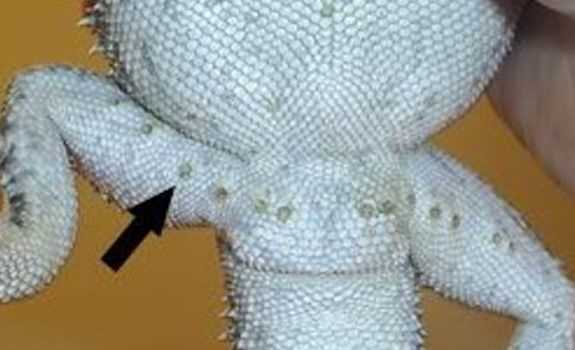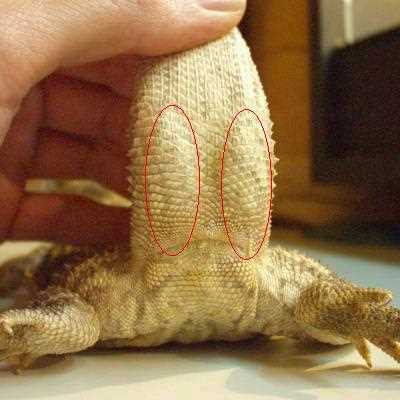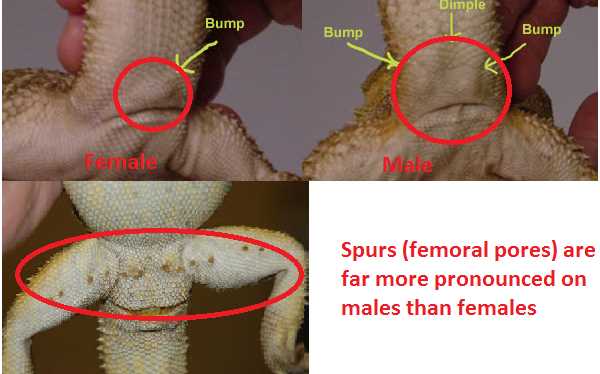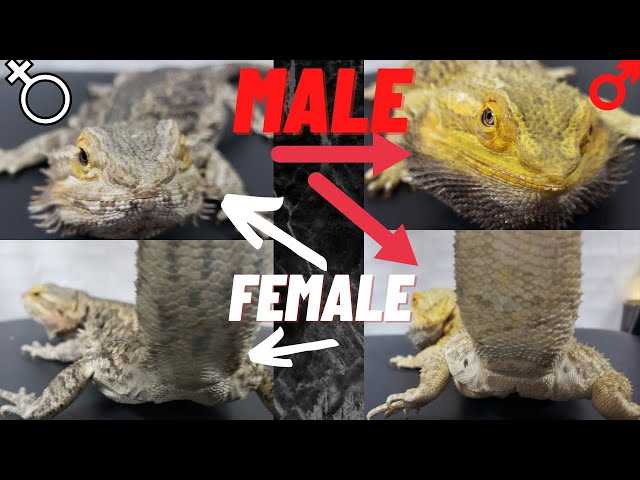
Male and female bearded dragons have distinct characteristics that can help you determine their sex. One of the most noticeable differences is in their size. Male dragons tend to be larger and bulkier compared to their female counterparts. They also have larger heads and thicker tails. In contrast, female dragons are usually smaller and have a more slender body structure.
Physical Differences in Male and Female Bearded Dragons
Male and female bearded dragons exhibit distinct physical characteristics that can be used to differentiate between the sexes. One of the most prominent differences is the size. Male bearded dragons generally grow larger compared to their female counterparts. They have a more robust build, with a heavier and elongated body. On the other hand, female bearded dragons have a smaller and more compact body structure.
The most obvious physical difference between male and female bearded dragons lies in their tails. Male dragons have longer and thicker tails, which they use during courtship displays to attract mates. The base of the tail also tends to be wider in males. Female dragons, on the other hand, have shorter and thinner tails. This is because males use their tails for balance during mating, while females do not require such stability.
Additionally, male bearded dragons have femoral pores located on the underside of their hind legs. These pores are used for scent marking and are more pronounced in sexually mature males. In contrast, female dragons lack or have smaller and less prominent femoral pores.
| Physical Differences | Male Bearded Dragons | Female Bearded Dragons |
|---|---|---|
| Size | Larger and more robust | Smaller and more compact |
| Head | Larger and broader | Smaller |
| Tail | Longer and thicker | Shorter and thinner |
| Femoral Pores | Present and more pronounced | Absent or smaller |
Methods for Sexing Bearded Dragons
One common method for sexing bearded dragons is by examining the size and shape of their femoral pores. These pores are located on the underside of the dragon’s thighs and can vary in size and appearance between males and females. Male bearded dragons typically have larger, more prominent femoral pores compared to females.
Another method for sexing bearded dragons is by looking at the distance between their cloaca and vent. The cloaca is the opening where waste and reproductive fluids are expelled, while the vent is the opening for the intestinal tract. In males, the distance between these two openings is usually greater compared to females.
Additionally, the presence or absence of hemipenal bulges can be used to determine the sex of a bearded dragon. These bulges are located at the base of the tail and are more pronounced in males. The absence of these bulges can indicate a female.
For accurate sexing, it is recommended to observe the bearded dragon’s behavior and display. Male dragons often exhibit head bobbing and arm waving behaviors as a display of dominance and courtship. These behaviors are less common in females. Furthermore, male dragons may display darker and more vibrant coloration compared to females.
If you are unsure about sexing your bearded dragon, seeking professional help from a veterinarian who specializes in reptiles is always a good option. They have the expertise and experience to accurately determine the sex of your pet.
- Examine the size and shape of the femoral pores
- Look at the distance between the cloaca and vent
- Check for the presence or absence of hemipenal bulges
- Observe the behavior and display of the dragon
By utilizing these methods and observations, you can confidently determine the sex of your bearded dragon and provide them with the proper care and environment they need.
Visual Cues for Determining the Sex of Bearded Dragons

Male Bearded Dragons

Male bearded dragons have a few distinct physical characteristics that set them apart from females. One of the most noticeable differences is the size of their heads. Male dragons typically have larger, bulkier heads compared to their female counterparts. This is due to the presence of the male’s hemipenes, which are the reproductive organs located at the base of the tail.
In addition to their larger heads, male bearded dragons also have a more pronounced beard or throat pouch. This beard can change color and become dark or black when the male is feeling threatened or trying to establish dominance. It is worth noting that not all males exhibit this behavior, and the intensity of the color change can vary.
Female Bearded Dragons
Female bearded dragons, on the other hand, have smaller heads and lack the prominent beard that males possess. They also tend to be smaller in size overall compared to males. Female dragons have a narrower and flatter tail base, which is usually not as thick as that of males.
Another characteristic that can help identify a female bearded dragon is the presence of a cloacal slit. This slit is located on the underside of the tail, just above the vent. It is used for both reproduction and waste elimination. Females may also exhibit a slight swelling around the base of the tail during their reproductive cycle.
Pore Size and Spiny Scales: Indicators of Gender
In male bearded dragons, the pores are generally larger and more prominent compared to those in females. The pores are located along the underside of the dragon’s thighs and continue towards the tail. By gently lifting the dragon’s hind legs and examining the area with a magnifying glass, pet owners can observe the size and number of these pores.
Another physical indicator of gender is the presence of spiny scales, often referred to as femoral pores, located on the undersides of the dragon’s thighs. These scales are more prominent in males and can be observed as a row of small, slightly raised bulges.
| Male Bearded Dragons | Female Bearded Dragons |
|---|---|
| Larger and more prominent pores | Smaller and less prominent pores |
| Row of small, slightly raised femoral pores | Smoother undersides without noticeable bulges |
In addition to these physical indicators, other factors, such as behavior and reproductive characteristics, can also provide clues to the gender of a bearded dragon. Observing the dragon’s behavior, such as head-bobbing or arm-waving displays, can help determine its sex. Female bearded dragons may display specific mating behaviors, such as digging and nesting.
If there is still uncertainty about the gender of a bearded dragon, it is recommended to seek assistance from a veterinarian specializing in reptiles. They have the experience and expertise to accurately determine the gender of the dragon, using a combination of physical examination and, if necessary, diagnostic techniques.
Behavior and Display: Clues to Your Dragon’s Gender
Another behavior that can indicate the gender of your dragon is arm waving. Male bearded dragons occasionally wave one of their front arms in the air as a greeting or as a sign of dominance. Females, on the other hand, rarely exhibit this behavior.
Mating behavior can also be an indicator of gender. If you observe two bearded dragons engaging in a courtship dance, with the male bobbing his head and the female appearing receptive, it is a strong indication that you have a male and a female pair.
Remember, always consult a veterinarian for a professional evaluation to confirm the sex of your bearded dragon if you are unsure.
Seeking Professional Help: Veterinarian Assistance for Determining Sex

If you are a bearded dragon owner and you’re having difficulty determining the sex of your pet, it may be time to seek professional help. A veterinarian who specializes in reptiles can provide valuable assistance in accurately identifying the sex of your bearded dragon.
Why seek professional help?
While there are various methods and visual cues that can help determine the sex of a bearded dragon, they are not always foolproof. It can be challenging for inexperienced reptile owners to accurately assess their dragon’s gender based on physical characteristics alone. Consulting a veterinarian who has expertise in reptile reproduction can provide a more accurate and reliable identification.
The importance of accurate sex determination
Knowing the sex of your bearded dragon is crucial for a number of reasons. For instance, if you are planning to breed your pet, it is essential to have a male and female dragon. Additionally, the sex of the dragon can impact its overall health and behavior, as well as its needs in terms of feeding and habitat maintenance.
What to expect during a veterinary visit
Proper care and habitat consideration
A veterinarian can also provide valuable advice and guidance on the proper care and habitat considerations based on the determined sex of your bearded dragon. They can help you create an optimal living environment for your dragon, ensuring its health and well-being.
If you find it challenging to determine the sex of your bearded dragon, seeking professional help from a veterinarian who specializes in reptiles is a wise choice. Accurate sex determination is essential for appropriate care and maintenance of your pet, and a professional can provide the expertise needed to make an accurate identification. Ensure your bearded dragon’s health and well-being by taking the necessary steps to determine its sex with the help of a qualified veterinarian.

I’m Lena Adams—a product of an unconventional upbringing in the African wilderness. My father, a daring explorer of African wildlife, sparked my fascination with reptiles, a passion that intertwined with the tragic loss of my mother during an expedition, leaving an indelible mark on my life. Driven to understand the creatures that captivated my parents, I embarked on my journey, sharing insights about reptiles, frogs, and lizards on my website. Through my explorations and conservation efforts, I honour my family’s legacy while seeking connections—to the creatures, nature, and the mother whose presence I yearn to understand.
